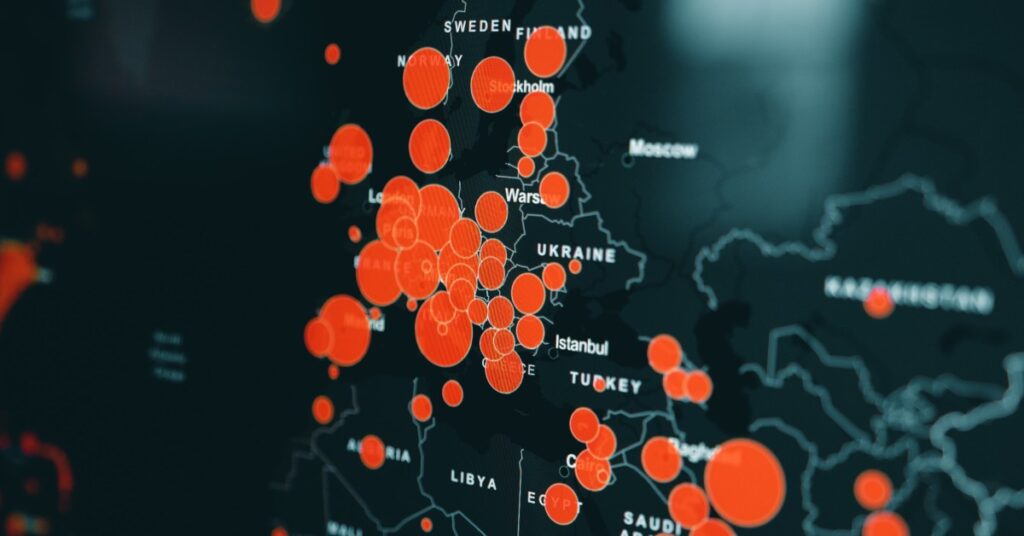
How Much Will You Make With a Master's in Business Analytics?
A master's in business analytics can help you land a [...]

The use of pictures to interpret data has been around for centuries, from the invention of the Cartesian grid in the 17th century to Dr. John Snow’s “dot” map of the 1854 London cholera epidemic. This art-statistics hybrid reached an early apex in 1869 with Charles Minard’s famous map of Napoleon’s Russia campaign. The map depicts the size of the army as well as the path of Napoleon’s retreat from Moscow in 1812, tying that information to temperature and time scales for a more in-depth understanding of the event, including when frostbite took its fatal toll.
We are today in another Golden Age of statistical graphics, this one driven by the availability of massive data sets and powerful computers to aggregate, interpret, and represent them. The last several decades, in particular, have seen the field of data visualization explode into numerous focus areas. Dashboards and data discovery tools, scorecard applications, data analysis suites, and an assortment of other software enable businesses and researchers alike to explore data in new and increasingly imaginative ways.
A growing number of organizations now find themselves in need of experts capable of effectively communicating ideas and insights to their audience—making the ability to work and create stories with data a must-have. As a result, a growing number of schools are offering students a path to upskilling their know-how through master’s programs in data visualization.
In our guide to data visualization master’s programs, we’ll cover:
Data visualization converts data from raw figures into a visual context, e.g., graphs, maps, charts, or dashboards. These representations make data more accessible and help audiences detect patterns, trends, and outliers in groups of data.
In the world of big data, data analytics and visualization tools and technologies are essential to analyzing massive amounts of information and informing data-driven decisions. This holds especially true for the tech industry, which is unique in the sheer quantity of data it can access.
In recent weeks, for example, Facebook, Google, and Apple all released maps, charts, and dashboards powered by aggregated data from millions of users that show how COVID-19 is spreading. The visualizations were created to help people make decisions to protect their health during the spread of the virus. In the process, they provided a surprising look at the unique type of data collection each company undertakes.
| University and Program Name | Learn More |
|
Boston College:
Master of Science in Applied Analytics
|
|
|
Merrimack College:
Master of Science in Data Science
|
The coursework in data visualization graduate programs varies by school, but most curricula draw from the social sciences alongside the fields of computer science, management, and statistics. This includes the Master of Science (M.S.) of Data Visualization at Parsons School of Design in New York, which offers high-level instruction in subjects like statistical analysis methods, information design, and the ethical considerations of data analysis.
Students at the New School take foundational courses that cover the basics of data visualization concepts, techniques, and tools such as machine learning, acquisition, augmentation, and data mining. The master’s program culminates in a final data visualization project that reflects a topic based on each student’s personal or professional interests, such as:
The MS in data analytics and visualization at Yeshiva University follows a similar approach through core courses that:
As part of the coursework, students are required to complete an industry-oriented final project and are encouraged to gain hands-on experience through internships and independent study.
After completing their master’s degree, some students may choose to continue their education through a PhD in data visualization or a related discipline, such as data science or business analytics. Generally, those who pursue a doctorate are interested in careers spent in research, academia, or both.
A variety of online master’s programs in the field offer students greater convenience and flexibility to complete their education than does the traditional classroom format. Some online data visualization programs may feature courses that incorporate face-to-face interaction with classmates through web conferencing and streaming software. Others utilize asynchronous instruction—such as prerecorded video lessons or game-based learning tasks—that students complete independently.
In some cases, online programs may offer full-time and part-time students access to resources like research centers with entrepreneur programs, community partnerships, labs, and sponsored competitions. Students can use these to build a network of industry professionals and learn the most current ideas and best information visualization practices.
Master’s-level degree programs in data visualizations prepare students for careers in a variety of fields, including business intelligence, data analytics, and graphic design, among others. Job titles in these fields include:
It goes without saying that professionals must possess specific requisite skills to lead a successful career, and that these skills make them more valuable in the professional world. It’s also safe to assume that prospective data visualization graduate students expect their education to equip them with these skills—and set them up for lucrative employment.
Largely, they do. According to PayScale, professionals with data visualization skills make an average annual salary of $77,324.
Adding specific job titles into the mix, however, can put a slightly different spin on compensation. Data analysts, for instance, make less than the overall category of professionals with data visualization in their skillset, at $64,830 per year. PayScale also reports that business intelligence analysts make on the lower end, pulling in an average yearly compensation of $64,156.
Some professions far exceed the average salary offered to professionals with data visualization skills. Many are associated with leadership or management responsibilities. Take senior data scientists, who make an average annual salary of $113,044. Analytics directors are another example; on average, they pull in $115,750 per year.
Questions or feedback? Email editor@noodle.com

A master's in business analytics can help you land a [...]

A master's in computer science may take you two years [...]

From financial services to manufacturing, industries across the board need [...]

Companies are desperate to fill analytics management positions, and having [...]
Categorized as: Data Science, Information Technology & Engineering